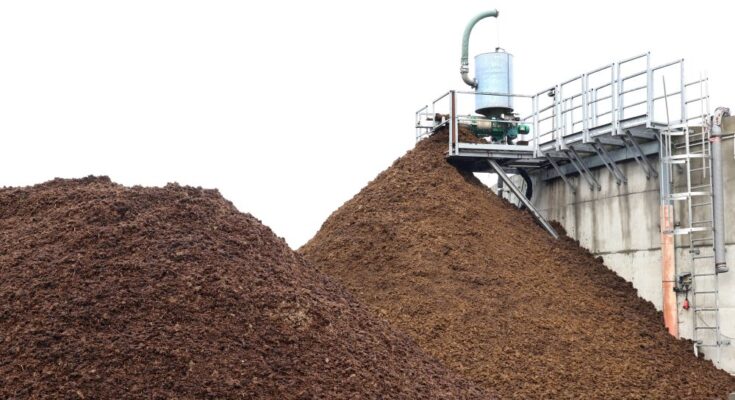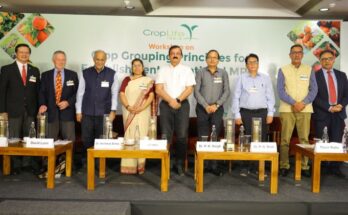The organic fertilisers market is expected to reach US$15.9 billion by 2027, at a compound annual growth rate (CAGR) of 11.5 percent during the forecast period, 2020-2027. Also, in terms of volume, the organic fertilisers market is expected to grow at a CAGR of 6.6 percent from 2020 to 2027 to reach 338.29 lakh tonne by 2027, a study Organic Fertilizers Market, conducted by Meticulous Market Research has estimated recently.
According to the study, the demand for organic fertilisers is growing across the globe. Organic agriculture serves multiple functions. It is an important tool for achieving ‘green productivity’ in agriculture and mitigates the negative impacts of conventional input-intensive agriculture by excluding the use of agrochemical inputs from the production system; minimising environmental pollution; promoting reuse and recycling of organic farm waste and crop residues; improving biodiversity; and enhancing soil productivity. Organic agriculture and agribusiness also contribute to improve rural livelihoods and sustainable development by generating rural employment opportunities and increasing farm incomes. Organic agriculture is not only beneficial for more affluent countries, but can also be applied successfully in other locations. Especially in less developed countries, it can contribute to foreign exchange earnings, green productivity, and sustainable socio-economic development.
COVID-19 impact on organic fertiliser market
The organic fertiliser market continues to be challenged by the lockdowns, logistic disruptions, reduced production, and associated economic impacts of COVID-19. The fertiliser sector has been affected since the outset, primarily in the US and China, the world’s largest producers and consumers of fertilisers. Moreover, the pandemic also affected the other key markets for organic fertilisers such as Australia, Brazil, India, and the EU-5 countries. To curb the spread of this disease and avoid related severe consequences, governments have announced partial or complete lockdowns globally, which has majorly impacted many manufacturing and service industries, including the fertilisers, crop protection chemicals, and agriculture additives industries.
The Food and Agriculture Organization of the United Nations (FAO) has acknowledged that the spread of COVID-19 is slowing down in a few countries and regions of the world. However, it is also resurging or spreading quickly in some other countries such as the US, Korea, Brazil, and India. As the COVID-19 crisis grows, manufacturers are quickly changing their practices and purchasing priorities to meet the changing consumer demand. Over the past couple of months, this crisis has directly impacted the organic fertiliser development rates as the raw-material providing and animal processing units in many countries worldwide have been disrupted. Governments shut down their national and international borders and economies for controlling the spread of the Coronavirus, heavily impacting international trade. Many markets are focused on fulfilling their requirements for fertilisers through domestic providers.
However, there is still a gap between demand and supply. Some regions are completely or partially dependent on imports and are still facing tough situations. Organic fertiliser production is majorly dependent on raw materials such as plant and animal waste. Disruptions in the existing supply chains have compelled the market players to create new supply chains, increasing costs, and the time required to supply catalysts to various areas of the fertilisers industry. Therefore, the halting of the transportation and logistics industries and reduced production in some countries owing to the lockdowns imposed are expected to affect the organic fertilisers market adversely in terms of volume sales and thereby market revenue in 2020 and 2021.
Animal-based organic fertilisers segment
Based on source, the organic fertilisers market is mainly segmented into animal-based, plant-based, and mineral-based organic fertilisers. The animal-based organic fertilisers segment is estimated to command the largest share of the overall organic fertilisers market in 2020. Further, the segment is expected to grow at the highest CAGR during the forecast period. The major share and the fastest growth of this segment are mainly attributed to its benefits such as high nutritional value, quick action and response, low quantity requirements, and easy and abundant availability of animal waste. Animal-based organic fertilisers are further segmented by type into blood meal, manure, bone meal, and other byproducts. The blood meal segment is estimated to dominate the market for animal-based organic fertilisers in 2020.
Based on form, the organic fertilisers market is mainly segmented into dry and liquid organic fertilisers. The dry segment is estimated to command the largest share of the overall organic fertilisers market in 2020 due to its higher adoption in lawn and garden applications, long-lasting effects, high efficiency in all climatic conditions, and the abundant and easy availability of raw materials. However, the liquid segment is expected to witness rapid growth during the forecast period owing to its high efficiency, uniformity of application, high absorbability, and easy and cost-effective application. Moreover, higher adoption rates in water-stressed areas are further expected to support the growth of this segment.
Based on application, the broadcasting segment is estimated to command the largest share of the overall organic fertilisers market in 2020. The dominant position of this segment is mainly attributed to its inexpensiveness and easy application. The rising adoption of advanced broadcasting equipment and machinery further supports the growth of this segment. However, the fertigation segment is expected to witness rapid growth, mainly due to the rising implementation of modern irrigation systems; advantages of the fertigation method, such as easy and safe application, maximum absorbability with minimum wastage of fertilisers, increased efficiency; and rising adoption for the organic orchard application.
Based on crop type, the cereals and grains segment is estimated to command the largest share of the overall organic fertilisers market in 2020. The major share and the fastest growth of this segment are mainly attributed to the increasing demand for organic grain- and cereal-based products and huge areas under organic cereal and grain cultivation.
Geographically, Asia-Pacific region is estimated to command the largest share of the global organic fertilisers market in 2020, followed by Europe and Latin America. The leading position of the Asia-Pacific region in the organic fertilisers market is primarily due to the rising government support and other organisations’ initiatives to promote and expand the organics industry. Also, rising health awareness, huge areas under organic cultivation, rapid growth in population and income levels, increasing mechanisation and irrigation facilities and the presence of many organic operators are the key factors propelling the growth of the Asia-Pacific organic fertilisers market. However, North America is expected to register the highest CAGR during the forecast period mainly due to the vast growth of the organic sector due to increasing health awareness among the consumers; growing population and rising demand for organic food; continuously growing areas under organic cultivation, and government support and other organisations’ and associations’ initiatives to promote organic agriculture and allied sectors across the region.
Major players
The major players operating in the organic fertilisers market are Italpollina (Italy), Multiplex Group (India), Coromandel International (India), Midwestern BioAg (US), Perfect Blend, (US), ILSA (Italy), California Organic Fertilisers (US), Biolchim (Italy), Qld Organics (Australia), FertPro Manufacturing (Australia), National Fertilizers Limited (India), SPIC (India), Fertoz (Australia), ScottsMiracle-Gro Company (US), Suståne Natural Fertiliser (Australia), and Fertikal NV (Belgium), among others.





We have bio-organic fertilizer pallets manufacturer in Gujarat India